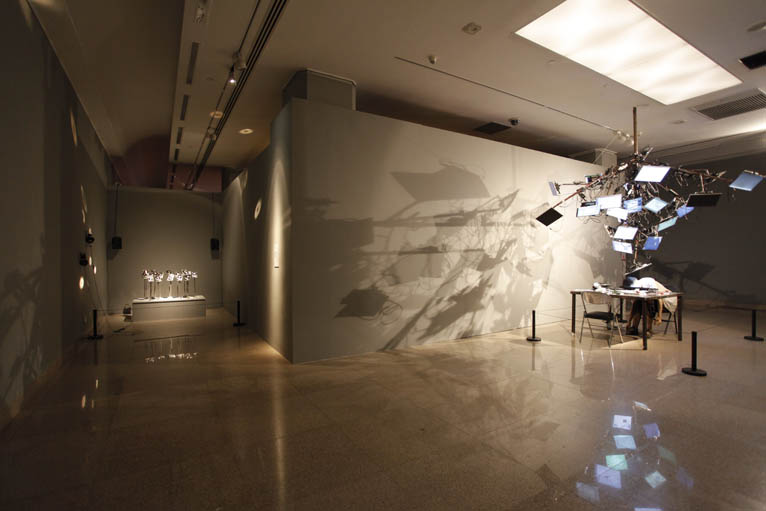TIMELAPSE: A SWISS-CHINA MEDIA ART EXHIBITION
| February 1, 2010 | Post In LEAP 1

It is very difficult for commentary on “Time-lapse” to separate itself from the circumstances of the show, particularly the ongoing development of Chinese contemporary art and new media education. Thus it serves to begin with some context. After the National Art Museum of China (NAMOC), the state’s official exhibition space, put on the infamous “China/Avant-Garde” in 1989, it did not stage any more contemporary art shows for fourteen years. In 2003’s “Sino-French Culture Year,” the museum began exhibiting contemporary art from China and abroad in its role as an important arena for cultural exchange—and a proxy of the Ministry of Culture. In 2008 the museum hosted “Synthetic Times” in a complete transformation of its post-’89 image, and the changes were closely linked to the efforts of curator Zhang Ga.
In recent years, there has been another trend of new media exhibitions passing through NAMOC. Since 2002 the museum has put on several large-scale new media exhibitions, including the Zhang-curated “Beijing International New Media Arts Exhibition and Symposium” (2004-2006) in addition to his “Synthetic Times.” These shows have provided a channel for exchange on a national and international level. The final piece comes from within Chinese new media art: the birth of video art in 1988 and the maturation of new media education after 2000. “Time-lapse” at NAMOC, curated by Zhang, is yet another intersection of these threads, this time comprised of joint efforts between Chinese and Swiss artists.
I won’t speak too much to the features of the work on display or the ideals of the curator, hoping instead to find clues that might help us understand this exhibition. On the whole the show reveals many diverse perspectives that reflect its curatorial mission. Qiu Zhijie’s International Airport Republic project and Cao Fei’s RMB City can both be understood as alternate realities that exist outside of space and time, or as spatial and temporal projections and layerings. Jin Jiangbo’s Chat, Hu Jieming’s Dozens of Days and Dozens of Years and Zhang Peili’s Landscape with Spherical Architecture all carry the simplicity of life as it is lived. The pieces are either site-specific interactions or narratives or something in between the two (real time and lapsed time). The Swiss artists’ works are interrelated and complementary, like the illusory projections of SeÅLance (Alexander Hahn, 1997). In For Machines (HerveÅL Graumann, 1999) the relations between apparatus, image and operation, and the connections between a kind of internal mechanical ethics and interaction, form a means of understanding this intuitive metaphorical installation. The creator of Variable 9 (Peter Aerschmann, 2003) is an expert in exploring the displacement and extension of time and space and establishes a fascinating, playful relationship between identity and setting. The exhibition does not present itself as spectacle, expressing consistent views between the artists and curator on many issues as an experiment rather than pure visual experience. Our experience instead unfolds in a completely different interactive manner (although new media does not necessarily demand interaction.)
As an exhibition and platform of cultural exchange “Time-lapse” holds the potential for deep exploration. But there is also latent danger. The possibility for depth comes from the dialogue between the artists and curator, but also the advancement of certain questions about the methods and ways of conceiving the exhibition. The danger lies in the disconnect between the possibility of circumscribed regional relations and the possibility of exhibiting cultural investigations under the assigned topic. Such an anxiety is also caused by the monotony of exhibitions saddled with the conceptual burden of “China” alongside the crisis of an increasing number of countries and artists moving toward a system of national and cultural presentation. However, if cultural exchange can truly result in mutual understanding and sharing common questions, synchronicity in time and space is still well worth looking forward to. It is hard to know just how the show will be presented in Switzerland. Will the function of the concept of “Time-lapse” in contemporary culture enjoy deeper discussion? How do we understand new media art in the context of media’s constant evolution? And do these discussions really touch on the central questions of modern culture? Li Zhenhua

